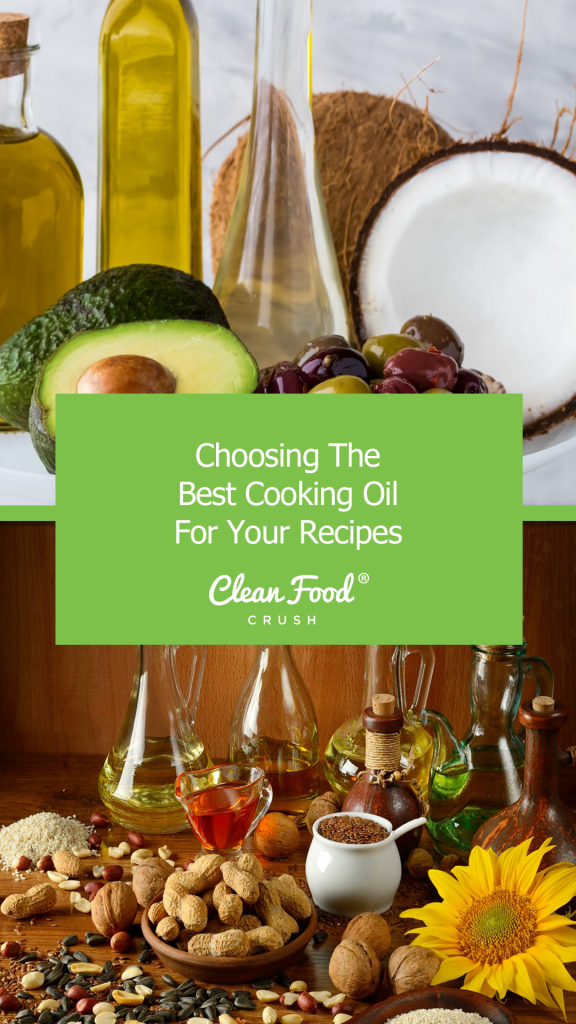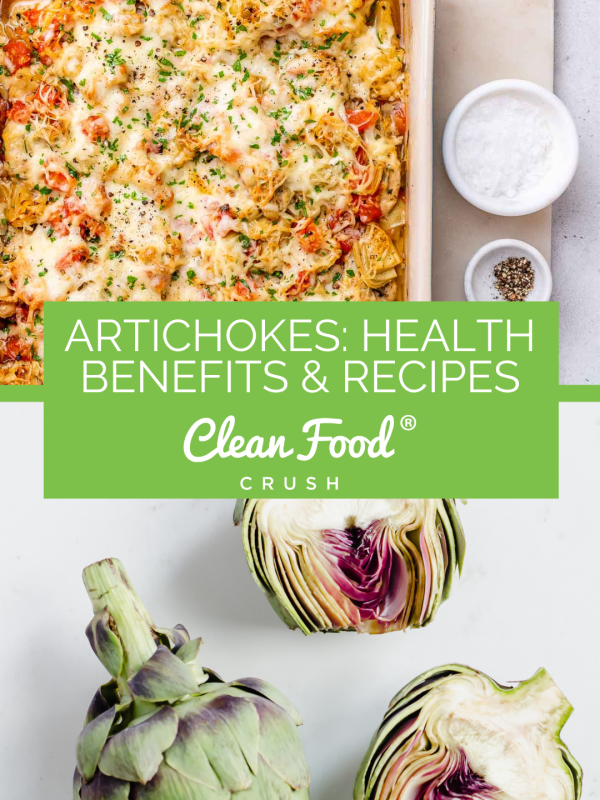This post contains affiliate links. Please see our disclosure policy.

No matter whether you’re an avid cook or just occasionally create recipes, we can bet you use oil at some point in the cooking process. There has been more and more variety of oil options available in the markets over time, which can understandably create some confusion about which are healthiest and which ones to use for various purposes.
So, we’re here to help clear up the confusion and steer you in the right direction!
What makes a good cooking oil?
You may already understand that not all oils are created equally. Many have been “demonized” in the media for various reasons while others are given a sort of “health halo”. There are also the ones that tend to flop back and forth between being considered healthy and unhealthy, which may understandably leave you wondering what to choose.
There are 2 main factors to consider when choosing an oil: it’s fat profile and smoke point. The way an oil is produced also makes a difference and will be covered below as well.
Fat Profile:
Oil is 100% fat, meaning it contains no calories from carbohydrates or protein. Just to set the record straight, this does NOT mean that oils will “make you fat” or contribute to weight gain. It all comes down to the type of fat you’re eating, which is it’s “fat profile”, or the types of fat it contains. There are 3 main types of fat: saturated, unsaturated, and trans fat. Unsaturated fat can then be broken down further into mono and polyunsaturated fats. To break that down even further, there are 2 types of polyunsaturated fats: omega 6 and omega 3.
Monounsaturated and omega 3 polyunsaturated fats are believed to be the healthiest types of fat, with trans fats being the worst. Evidence shows that monounsaturated fats from oils are protective against heart disease. Omega-3 fats are proven to help reduce inflammation in the body as well as promote heart health and lower triglyceride levels in the blood. Saturated and omega 6 polyunsaturated fats tend to fall somewhere in between since they are not all created equally.
Smoke Point:
Smoke point refers to the temperature at which an oil will begin to break down and produce smoke. It can range from the lower end of around 325 degrees F to over 500 degrees F. When oils begin to smoke, they can release chemicals and expose the body to harmful free radicals. Therefore, it’s important to choose oils with a high smoke point for higher temperature cooking and reserve those with a low smoke point for dressings and lower temperature cooking.
Oil production:
Next comes the question of how the oil is manufactured, which is usually indicated by a label on the product. You’ve probably seen terms like “virgin” and “unrefined” on oils. “Virgin” or “extra-virgin” means that an oil has been minimally processed and was extracted from the plant or seed as naturally as possible. They can also be referred to as “unrefined”. Refined oils, on the other hand, are extracted using heat and sometimes chemicals to remove the oil, which can damage the oil and reduce its nutritional value. Extra-virgin and unrefined oils are therefore generally the best options to choose.

What are the best oils to use?
Now that we have the nitty-gritty details of oils covered, let’s cover which are the best types to use! Here are some of the healthiest options:
- Extra virgin olive oil. This one may not come as a surprise, but it has kept its popularity as a healthy oil for good reason. Olive oil is rich in monounsaturated fats and has a moderately low smoke point, so it’s best for low-temperature cooking or using raw as a dressing.
- Avocado oil. This is probably the best oil for general cooking since it has a high smoke point (>500 degrees F) so it will retain its nutritional value and composition despite high temperatures. It is also rich in monounsaturated fats and can be used for sauteing, roasting at higher temperatures, and the like.
- Flaxseed oil. This oil, along with walnut oil, are the few that contain beneficial omega-3 fatty acids. The caveat is that they are not heat tolerant, so should not be used in cooking at all but rather for cold uses like in dressings or taken as a supplement. They also have a short shelf life and should be kept refrigerated to prevent spoilage.
- Unrefined coconut oil. This oil has been perhaps the most controversial of oils in recent years. Coconut oil contains mostly saturated fat, which leads many people to believe it can be harmful to heart health. However, there is a difference between saturated fat from plant versus animal sources, and studies have shown that saturated fats found in plant sources such as coconut oil may improve the cholesterol ratios. Coconut oil has a moderate smoke point and is good for baking and medium temperature sauteing or stir-frying.
- Ghee. Ghee is clarified butter which is made by melting butter and separating out the solid parts. It has a much higher smoke point than regular butter making it a better option for cooking. It also contains almost no lactose or protein casein, so it’s a suitable choice for people who have intolerances to those. Keep in mind that ghee is a source of animal-based saturated fat, so the amount used should be limited.
- Sesame Oil. This oil has a strong nutty flavor and is great for Asian cooking. It is also rich in both mono and polyunsaturated fats and has a moderate smoke point, making it good for stir-frying at medium temperatures.

Fats & Oils to limit or avoid
On the other hand, some oils aren’t great options for cooking.
- Vegetable Oil. Technically this term refers to any oil that comes from a plant source, yet as we’ve described, not all are created equally. Most vegetable oils are a blend of canola, corn, soybean, safflower, palm and sunflower oils, and none of those oils are the healthiest types. Vegetable oils are highly refined and processed, and they are also usually a source of omega-6 fatty acids, which can contribute to harmful inflammation in the body.
- Canola Oil. This one is also controversial in the media. While it does contain mostly unsaturated fats, the concern comes from the fact that it is a highly genetically modified crop (>90% of canola crops are GMO) and also highly refined, with chemicals and heat being used to extract the oil. This makes it more harmful to the body despite its fat profile.
- Hydrogenated or partially hydrogenated oils. These include margarine and shortening and are often used as an ingredient in highly processed, packaged, or fried foods. These are a type of trans fat, which is damaging to heart health and cholesterol levels.
In Summary
While there is a lot of variety on the market shelves, we hope this guide serves as a useful resource for choosing the best oil for the purpose you are using it for. One last tip is to be sure to store oils in a cool, dark place (such as a closed pantry), and note that some do best refrigerated to prevent spoilage. With practice in using, you will soon learn which flavors of oils you like best for various cooking purposes. Happy cooking!



















